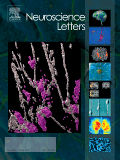
“The present study reports the behavioral, electrophysiological, and neuropathological effects of cannabidiol (CBD), a major non-psychotropic constituent of Cannabis sativa, in the intrahippocampal pilocarpine-induced status epilepticus (SE) rat model. Our findings demonstrate anticonvulsant and neuroprotective effects of CBD preventive treatment in the intrahippocampal pilocarpine epilepsy model, either as single or multiple administrations, reinforcing the potential role of CBD in the treatment of epileptic disorders.” https://www.ncbi.nlm.nih.gov/pubmed/28367124
“This study showed that CBD treatment reduces the behavioral severity and oscillatory electrographic changes of SE, the post-ictal lethargy, and the neuronal loss associated with the pilocarpine-induced SE rat model. More studies are needed to understand the specific mechanisms of action related to the neuroprotective and anticonvulsant effects of CBD in epilepsy.” https://www.ncbi.nlm.nih.gov/pmc/articles/PMC5355474/






